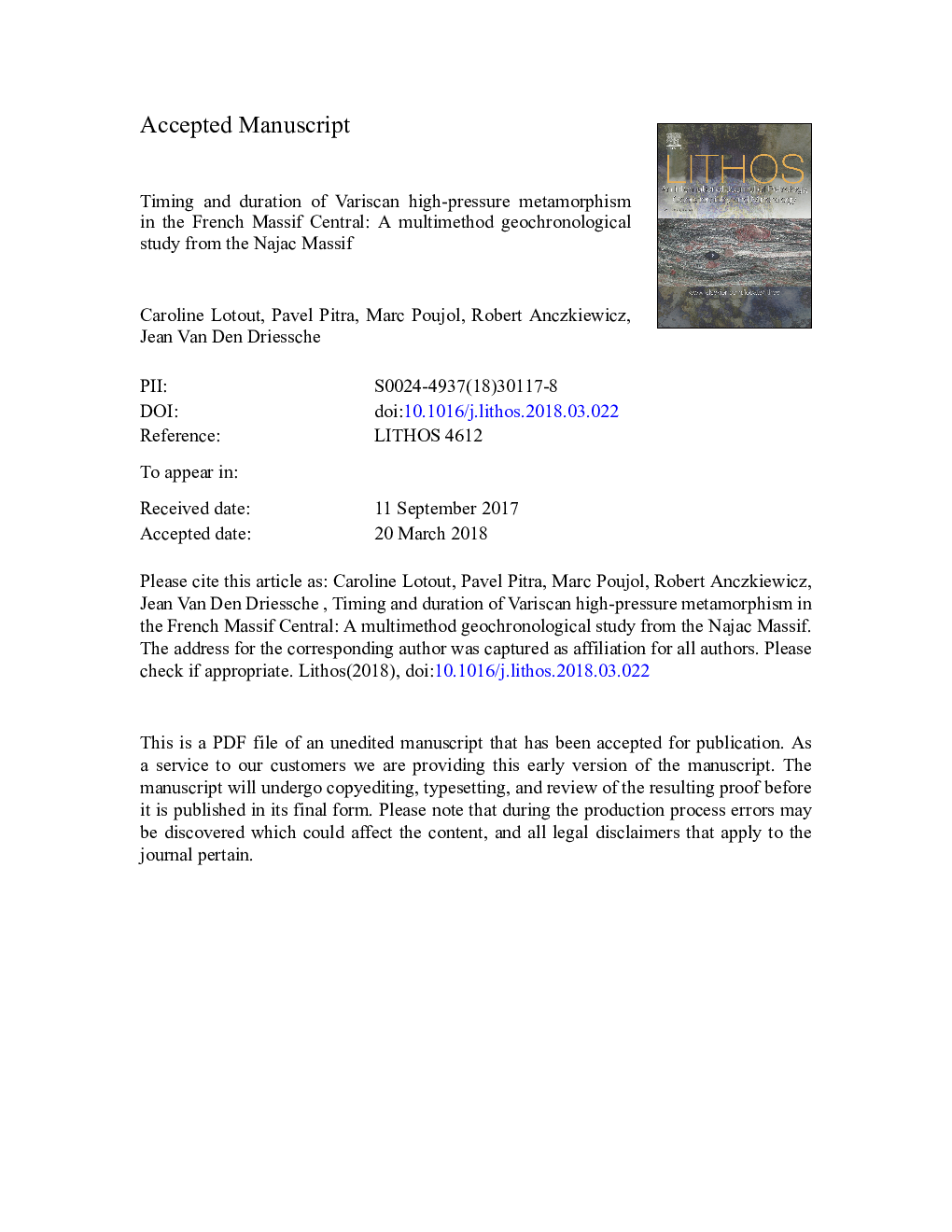| Article ID | Journal | Published Year | Pages | File Type |
|---|---|---|---|---|
| 8911660 | Lithos | 2018 | 54 Pages |
Abstract
Accurate dating of eclogite-facies metamorphism is of paramount importance in order to understand the tectonic evolution of an orogen. An eclogite sample from the Najac Massif (French Massif Central, Variscan belt) displays a zircon-bearing garnet-omphacite-amphibole-rutile-quartz peak assemblage. Pseudosection modeling suggests peak pressure conditions of 15-20â¯kbar, 560-630â¯Â°C. Eclogite-facies garnet displays Lu-enriched cores and Sm-rich rims and yields a Lu-Hf age of 382.8â¯Â±â¯1.0â¯Ma and a Sm-Nd age of 376.7â¯Â±â¯3.3â¯Ma. The ages are interpreted as marking the beginning of the prograde garnet growth during the initial stages of the eclogite-facies metamorphism, and the high-pressure (and temperature) peak reached by the rock, respectively. Zircon grains display chondrite-normalized REE spectra with variably negative, positive or no Eu anomalies and are characterized by either enriched or flat HREE patterns. However, they yield a well constrained in situ LA-ICP-MS U-Pb age of 385.5â¯Â±â¯2.3â¯Ma, despite this REE pattern variability. Zr zonation in garnet, Y content in zircon and the diversity of zircon HREE spectra may suggest that zircon crystallized prior to and during incipient garnet growth on the prograde P-T path, recording the initial stages of the eclogite-facies conditions. Consequently, the zircon age of 385.5â¯Â±â¯2.3â¯Ma, comparable within error with the Lu-Hf age obtained on garnet, is interpreted as dating the beginning of the eclogite-facies metamorphism. Accordingly, the duration of the prograde part of the eclogite-facies event is estimated at 6.1â¯Â±â¯4.3 Myr. Subsequent exhumation is constrained by an apatite U-Pb age at 369â¯Â±â¯13â¯Ma.
Related Topics
Physical Sciences and Engineering
Earth and Planetary Sciences
Geochemistry and Petrology
Authors
Caroline Lotout, Pavel Pitra, Marc Poujol, Robert Anczkiewicz, Jean Van Den Driessche,
